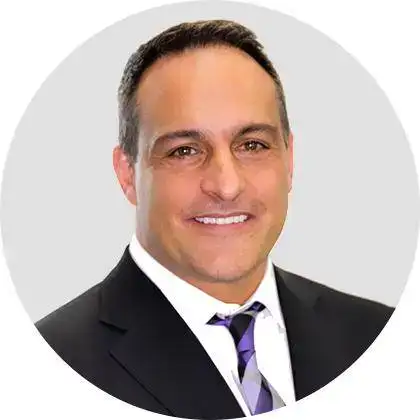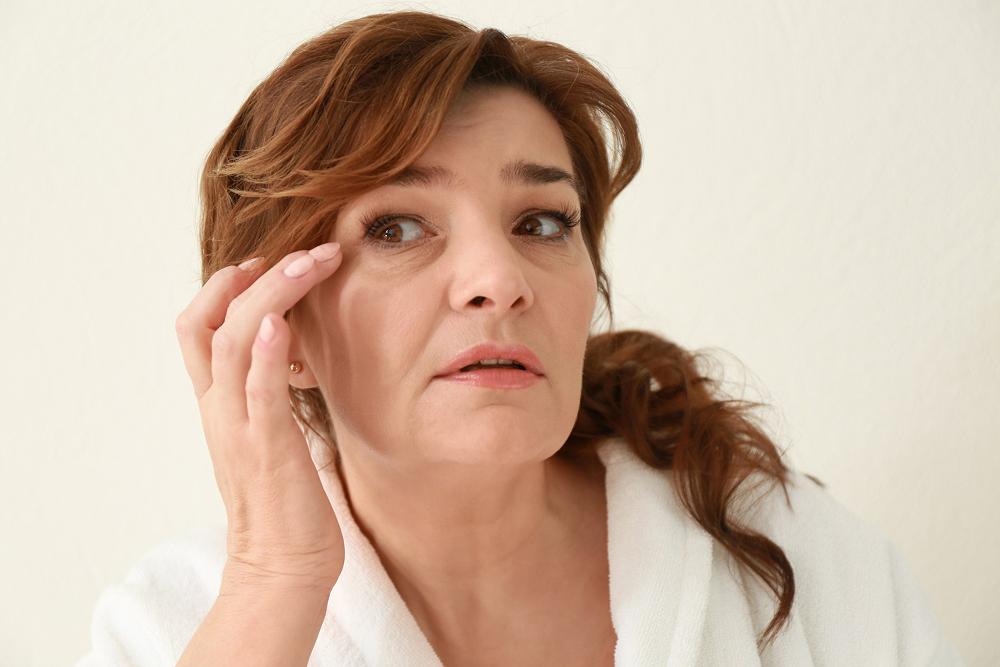Laser upper blepharoplasty Seattle , also called laser upper eyelid surgery, is a procedure to refine the upper eyelids by removing excess skin and carefully addressing small fat pads. The goal is to provide a natural, refreshed look. For many people, upper‑lid laxity develops gradually and can create a heavy, tired expression or soften the eyelid crease. Also, in more advanced cases, overhanging skin may even narrow the upper field of vision.
At Seattle Plastic Surgery, we combine experienced surgical treatment with CO₂ laser technology. Dr. Craig Jonov and Dr. Santos are dedicated to providing a safe and precise option for eligible patients seeking functional relief.
What Is Laser Upper Blepharoplasty?
In a laser upper blepharoplasty, a fine CO₂ laser is used to create incisions in the natural upper‑lid crease. The laser’s energy allows for incising and simultaneously sealing tiny blood vessels, which can reduce active bleeding and help keep the area clean during surgery.
Through these incisions, excess skin is removed and, when indicated, conservatively contoured small fat compartments that contribute to upper‑lid fullness. The skin is then closed with delicate sutures placed within the crease so the resulting line is well concealed when the eyes are open.
Who Is a Good Candidate?
Ideal candidates are healthy adults who are bothered by upper‑lid heaviness, hooding, or loss of crease definition and who seek a natural improvement rather than a dramatic change. Additional considerations include:
- Eye care: A history of dry eye, prior eye surgery, or contact lens dependence is important to discuss.
- Brow position: Brow descent can mimic or amplify upper‑lid skin excess.
- Realistic goals: A conservative approach that respects your unique anatomy delivers results that age gracefully and maintain a natural blink.
We will evaluate your eyelids, brow, skin quality, and medical history to determine candidacy and outline a personalized plan.
Benefits of Laser Upper Blepharoplasty
Patients choose laser upper blepharoplasty for a combination of aesthetic and functional reasons:
- A more open, rested look with a crisper, natural‑appearing lid crease
- Discreet scarring hidden within the upper‑lid fold
- Potential improvement in peripheral vision when excess skin previously encroached on the visual field
- Refined early recovery experience for some patients
Individual results vary, but our medical providers will help you understand what’s achievable for your specific situation.
How to Prepare for Your Consultation
Keep your health history, medications, and supplements handy. Also, inform the healthcare providers about previous eye procedures and daily routines. During your visit, we will:
- Evaluate eyelid skin, crease position, fat pads, and brow relationship
- Screen for dryness and review contact lens use
- Take standardized photographs for planning and follow‑up
- Outline a personalized plan (laser‑assisted or traditional) with a clear rationale
- Review anesthesia choices, recovery steps, and aftercare supplies you’ll want at home
You’ll get a summary of recommendations, a quote tailored to your plan, and scheduling options.
What to Expect on the Day of Surgery
- Arrival and marking: After check‑in, Dr. Santos or Dr. Jonov will confirm your surgical plan and review aftercare. With you sitting upright, precise markings are placed to define the intended crease and the safest amount of skin to remove. This step is done to protect the blink function and symmetry.
- Anesthesia: Most upper‑lid procedures are comfortably performed with local anesthesia plus light oral or IV sedation. You are relaxed and pain‑controlled, and you go home the same day with a responsible adult. General anesthesia may be considered when combining procedures.
- Eye protection: Sterile corneal shields and protective techniques are used during the laser portion to safeguard the eye surface.
- Laser incision and tissue management: The CO₂ laser follows the markings within the natural crease, creating clean incisions while sealing tiny vessels. Excess skin is removed.
- Closure: Fine sutures close the skin edges. As the incision lies in the crease, the scar is typically well camouflaged once healed. A thin layer of ointment is applied, and detailed recovery instructions are reviewed before you leave.
- Timing: When performed alone, upper‑lid laser blepharoplasty commonly takes about 45–60 minutes, though surgical time varies with anatomy and any additional procedures.
Recovery: A Practical Timeline
While your recovery is unique to you, these are the typical stages most people go through:
Days 0–3: Early care: Expect swelling, a sense of tightness, and mild to moderate bruising. Keep your head elevated, apply cold compresses as directed, and use prescribed ointments and lubricating drops. You should avoid bending, any heavy lifting, and strenuous activity. Napping in a slightly upright position can help minimize swelling.
Days 4–7: Settling in: Swelling and bruising start to fade. If non‑dissolvable sutures were placed, they are often removed around day 5–7. Light activities are usually comfortable. Many patients find they can be out in public with sunglasses during this window.
Week 2: Back to routine: Most people feel presentable for work, errands, and social activities. Light makeup may be approved once incisions are sealed. Contact lenses can often be resumed when comfort allows and your surgeon clears you to do so. Avoid any high-intensity exercise until cleared.
Weeks 3–6: Refinement: Residual swelling resolves, and the crease softens and blends. Protect healing skin from UV exposure with sunglasses and broad‑spectrum SPF, even on cloudy Seattle days.
Results and Longevity
Laser upper blepharoplasty is designed to restore a rested, natural appearance without changing your fundamental expression. As incisions are placed in the crease, scars are usually very discreet. Many patients notice meaningful improvement within two to three weeks.
Upper‑lid improvements typically last for years. Longevity depends on factors such as genetics, skin quality, sun protection, and brow position over time. If future changes occur, they are often related to brow descent rather than upper‑lid skin alone; in those cases, a brow‑focused solution may be more appropriate than repeating eyelid skin removal.
Risks and Safety Considerations
Eyelid surgery is generally considered safe when performed by experienced surgeons, yet all operations carry risk. We review these in detail so you can make an informed decision. Common, usually temporary effects: Swelling, bruising, light sensitivity, temporary dryness or tearing, and short‑lived blur from ointment are typical in early healing.
Potential risks
- Infection, bleeding, prolonged dryness or irritation, visible scarring, asymmetry, difficulty fully closing the eyes, and anesthesia‑related events. We minimize risk through conservative planning, hemostasis, eye protection with corneal shields, and close follow‑up.
- Your safety remains our priority from consultation through recovery. You’ll receive clear written instructions, after‑hours contact information, and scheduled follow‑ups to monitor healing.
Can Laser Upper Blepharoplasty Be Combined with Other Treatments?
Yes, depending on your goals, upper‑lid surgery may be combined with:
- Brow lift to address brow descent that contributes to upper‑lid heaviness
- Ptosis repair to improve the true eyelid droop related to muscle function
- Lower eyelid or skin refinements for comprehensive eye area rejuvenation
- Light fractional laser resurfacing (in suitable candidates) to soften fine lines around the eyes
Combining procedures can be efficient and may harmonize results across the upper face. We’ll discuss options and staging during your consultation.
Why Choose Seattle Plastic Surgery?
- Expertise with eyelid anatomy: Our surgeons will provide the approach that best aligns with your goals and safety.
- Natural results: We prioritize proportion, symmetry, and preservation of function.
- Advanced technology, thoughtful care: CO₂ laser assistance, eye protection protocols, and a clear recovery roadmap support a smooth experience.
- Continuity and access: From your first consultation to your final follow‑up, our team is available to answer questions and guide your recovery.
Ready to learn more about laser upper blepharoplasty?
You can schedule your laser upper blepharoplasty through our price stimulator or call us at (206) 739-0355.
FAQs
How long does it take to see results from upper blepharoplasty?
Most patients begin to notice visible improvement within 10–14 days, once the majority of swelling and bruising has subsided, allowing them to feel comfortable in public. However, the eyelids continue to refine over the following weeks, with scars softening and fading over 2–3 months.
What is the recovery time for laser blepharoplasty?
When the laser is used as a surgical tool instead of a scalpel, recovery is comparable to traditional blepharoplasty, typically 7–14 days before most bruising and swelling resolve. If laser resurfacing is performed at the same time, the treated skin typically heals within 4 to 10 days, but redness can persist for several weeks, making diligent sun protection essential during recovery.
What can worsen blepharoplasty recovery?
Recovery can be slowed by smoking or nicotine use, which restricts blood flow and impairs healing, as well as by taking blood-thinning medications or supplements. Other factors include overexertion, rubbing the eyes, wearing makeup or contact lenses too early, and poor sun protection.
What does day 1 of blepharoplasty recovery look like?
On the first day, it is normal to experience puffiness, tearing, mild discomfort, blurred vision from the ointment, and sensitivity to light.
What are the worst days after blepharoplasty?
The most difficult days are usually days 2 and 3, when swelling and bruising reach their peak, often appearing worse in the morning and easing throughout the day. After this, most patients notice gradual and steady improvement, with discomfort decreasing as the healing process advances.
What is the fastest way to recover from a blepharoplasty?
The best way to recover quickly is to follow your surgeon’s instructions closely: use cold compresses for the first 48–72 hours, keep your head elevated, take only approved pain medications such as acetaminophen, and avoid NSAIDs. You should also avoid alcohol, nicotine, and strenuous activity until cleared.

Dr. Jonov is a cosmetic surgeon who specializes in plastic surgeries of the face, breast, and body at Seattle Plastic Surgery.

